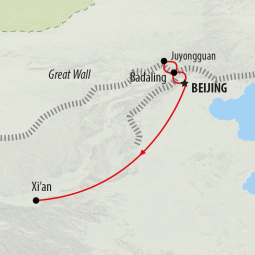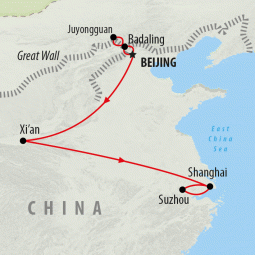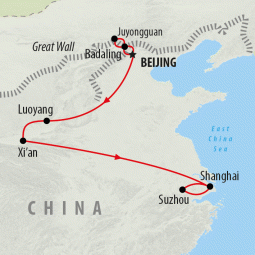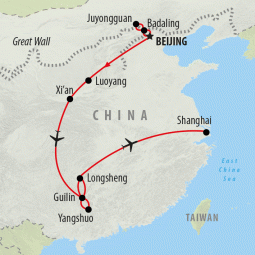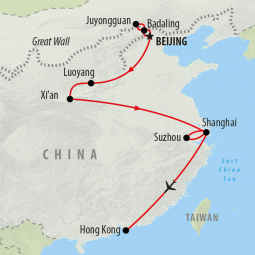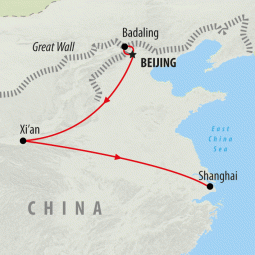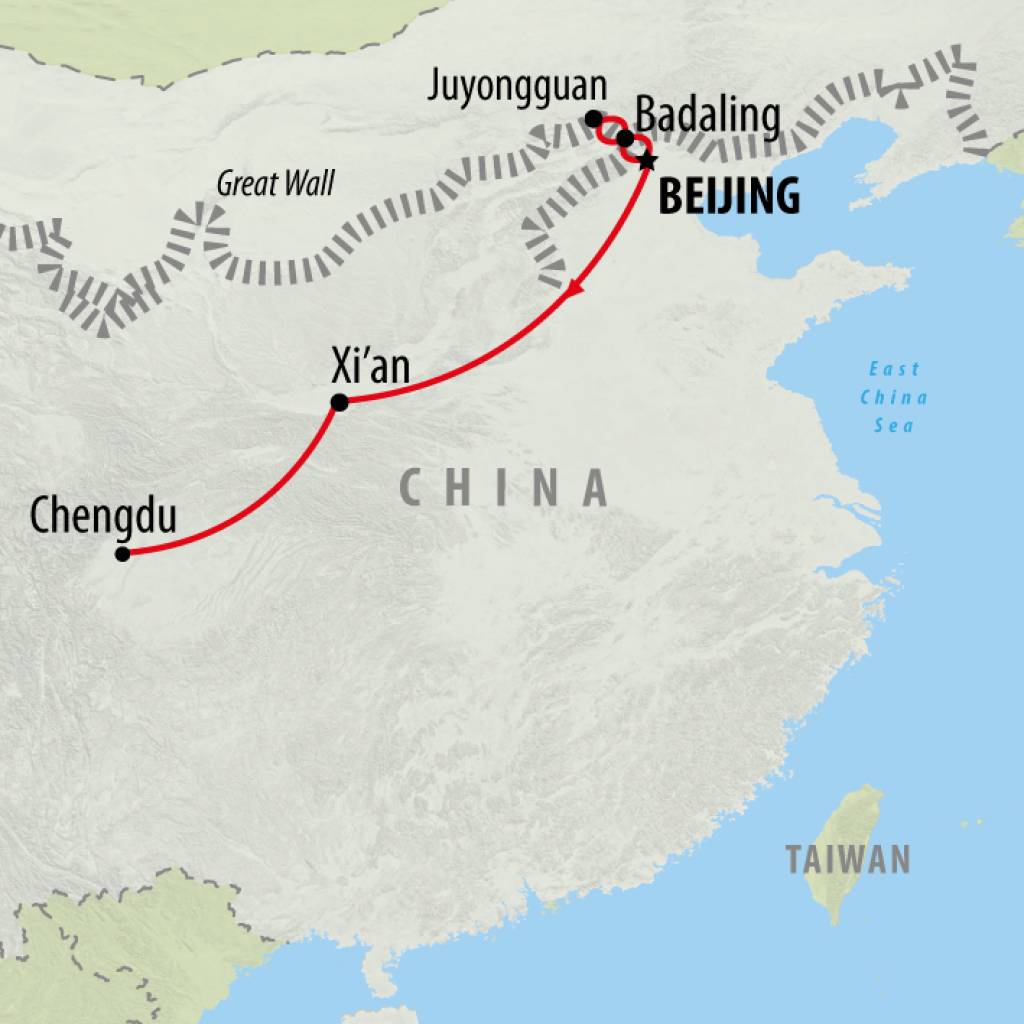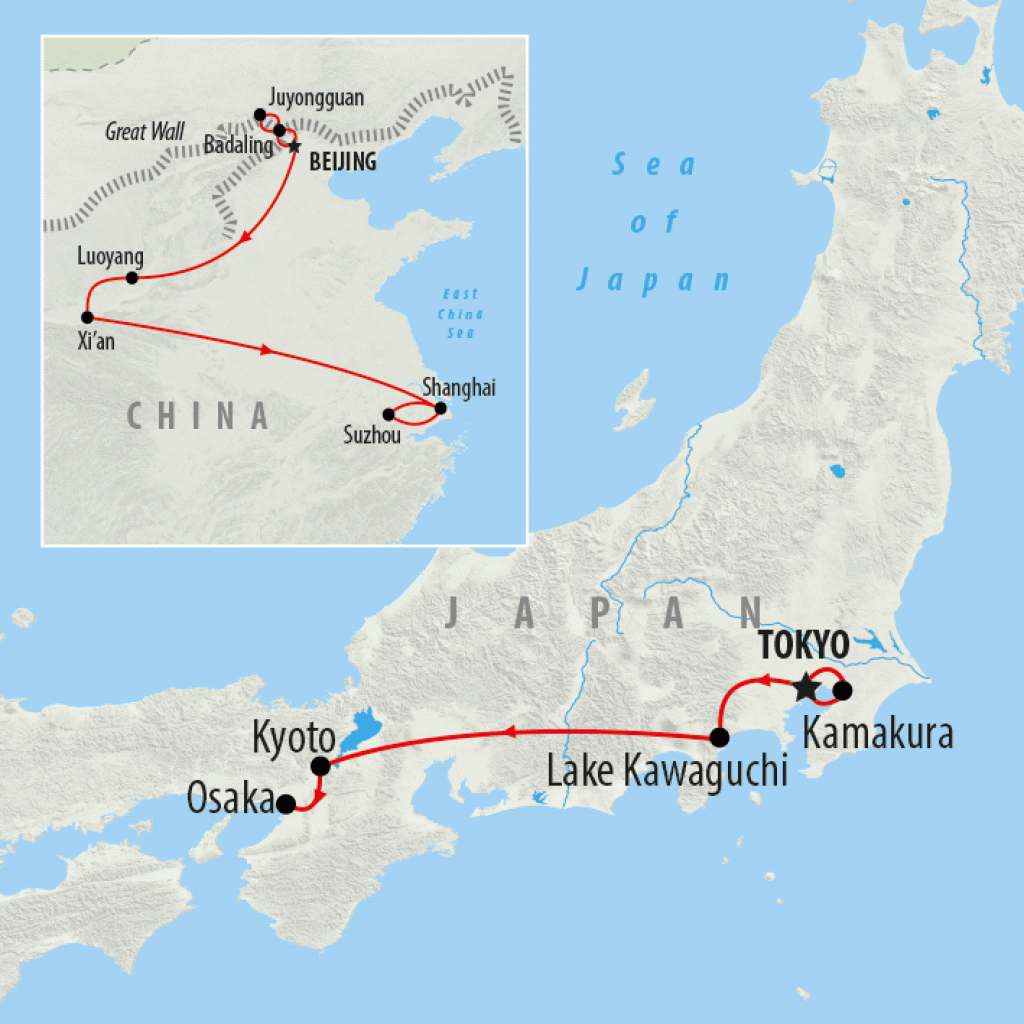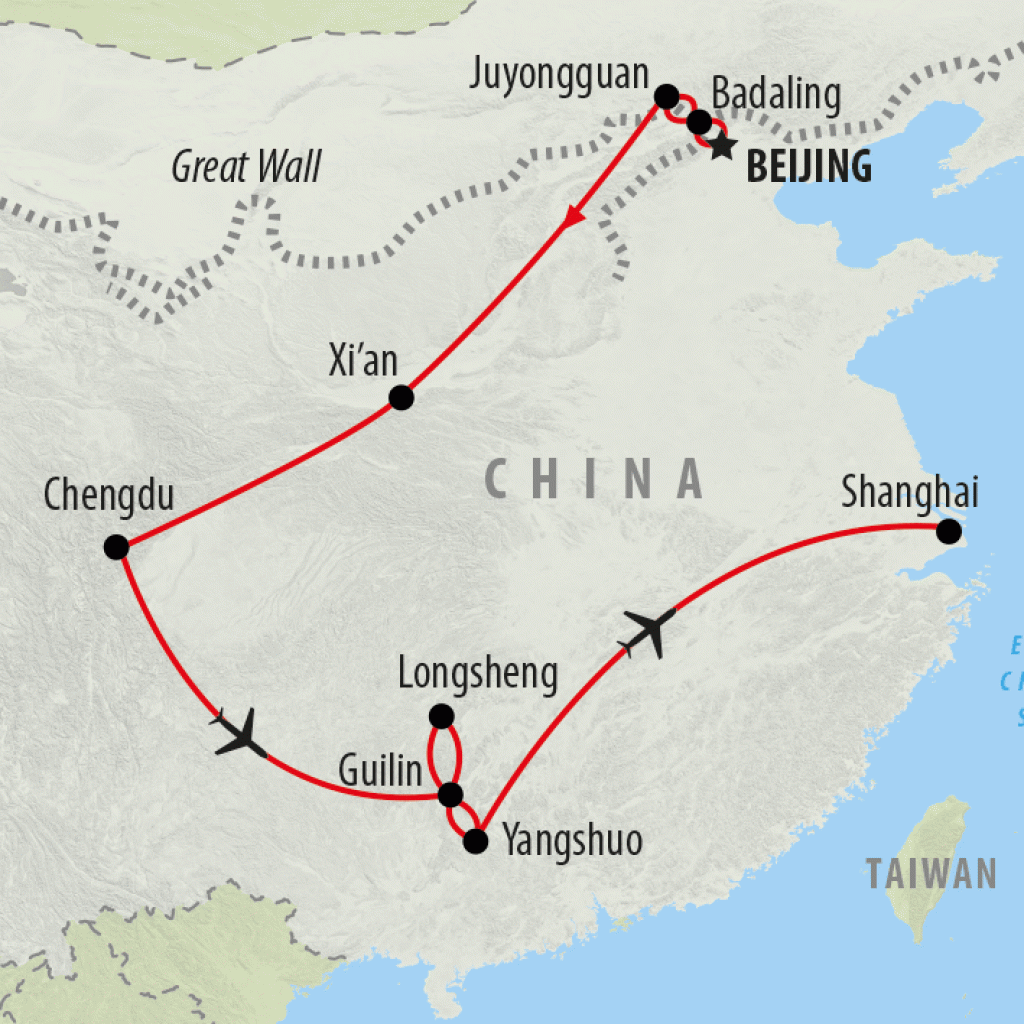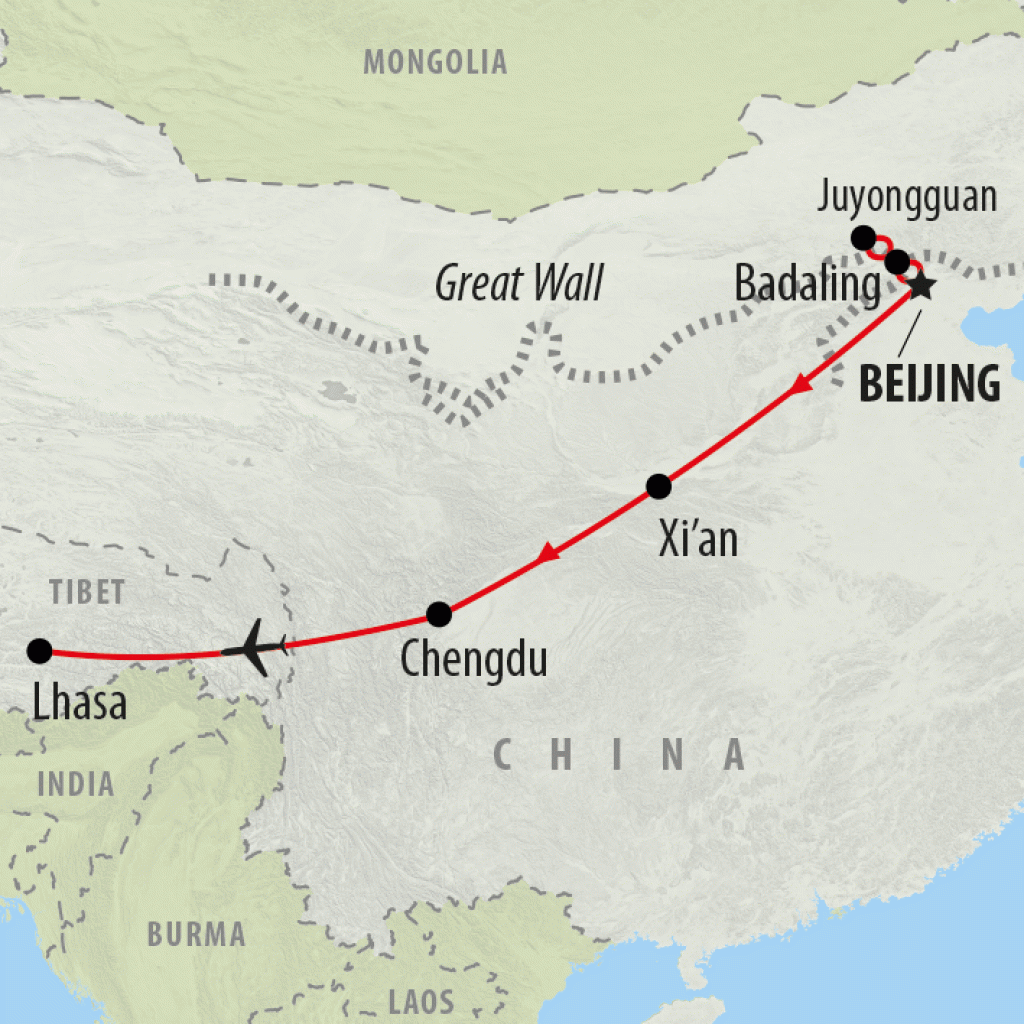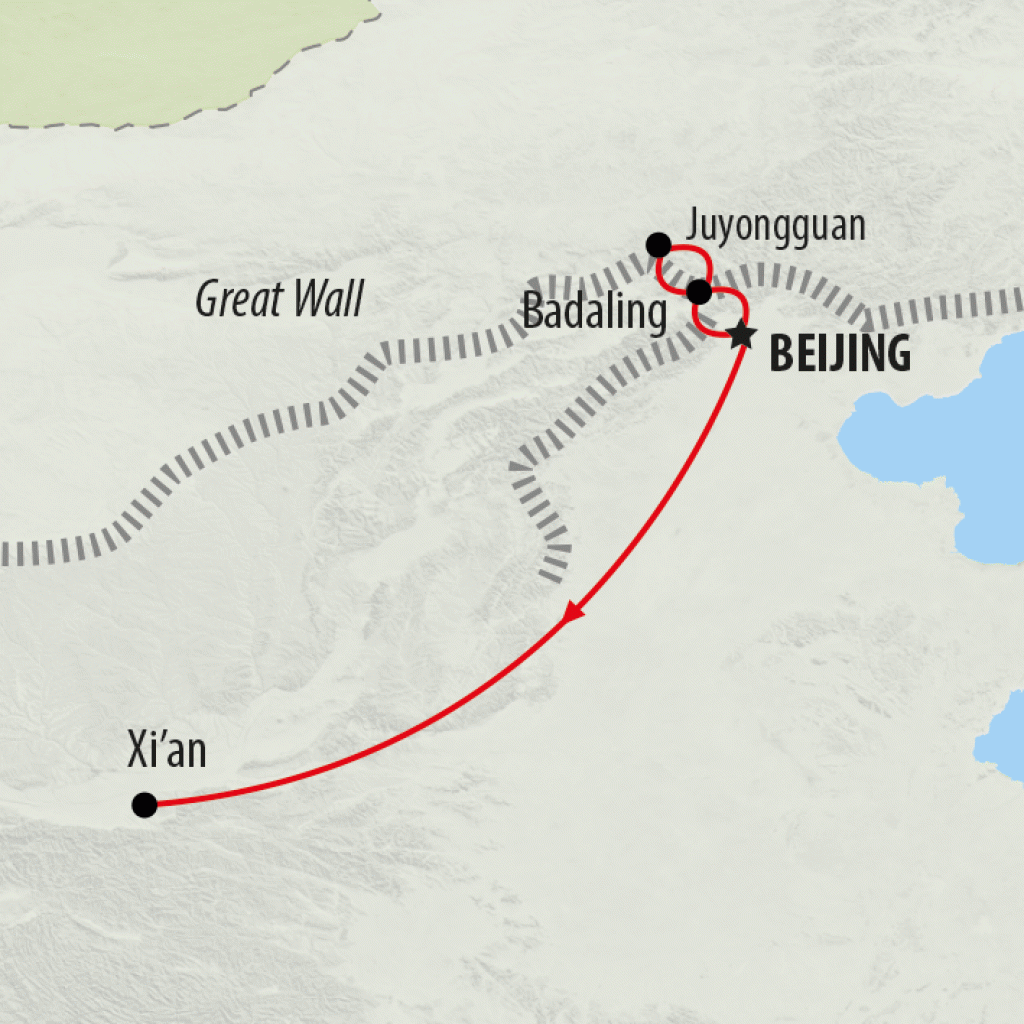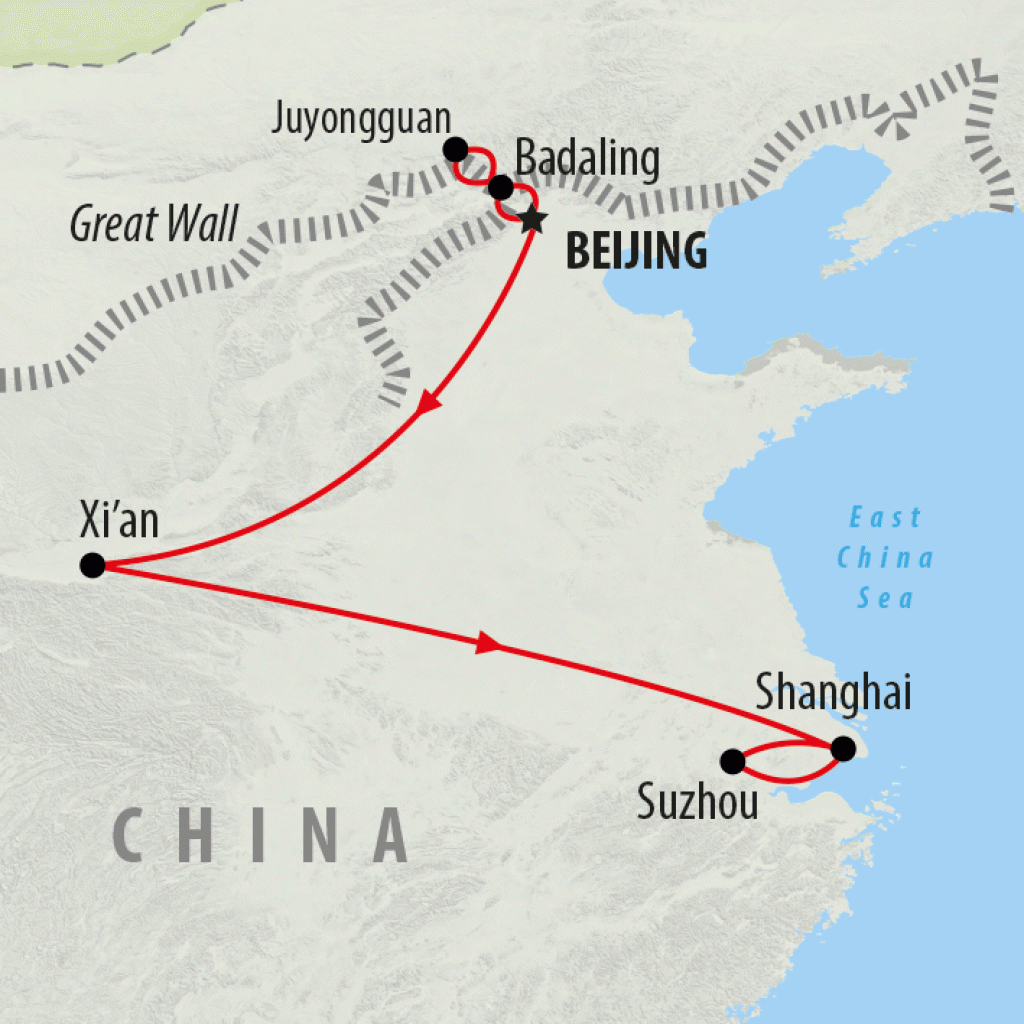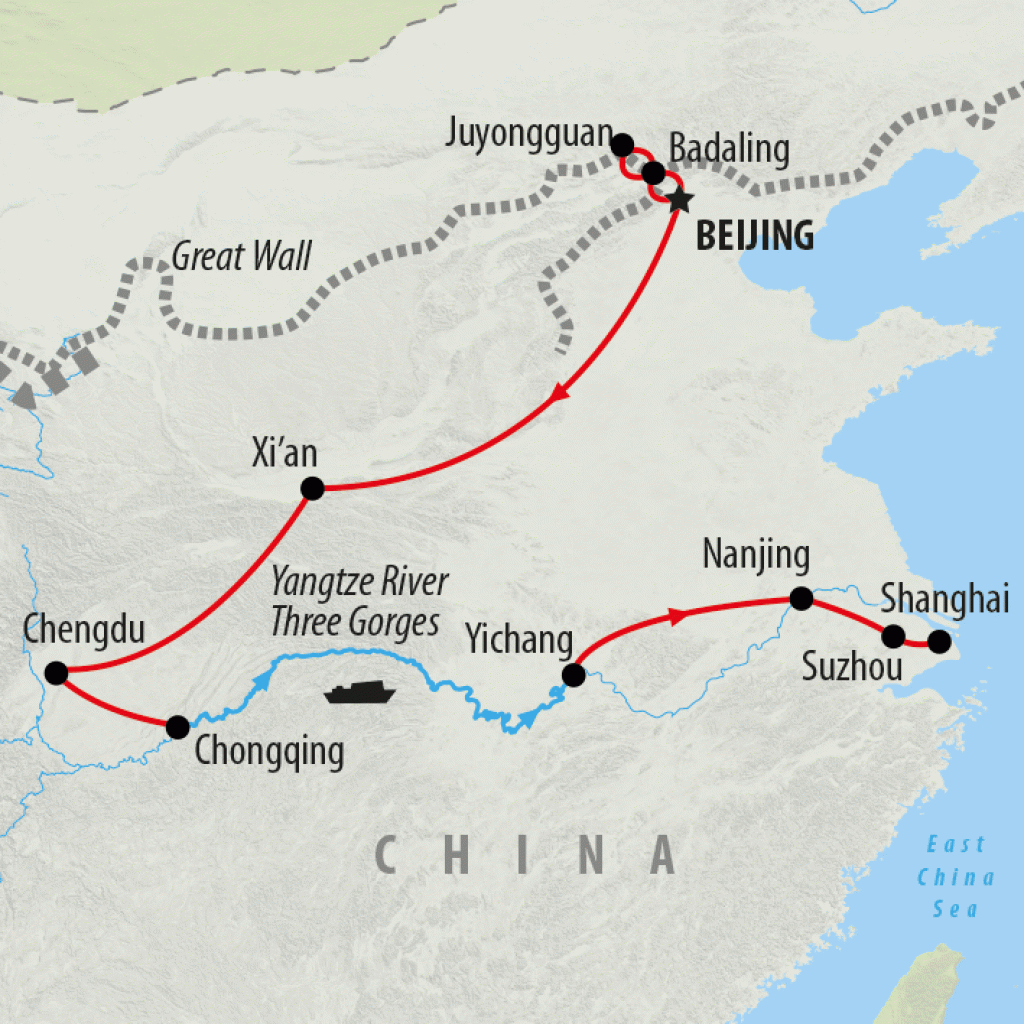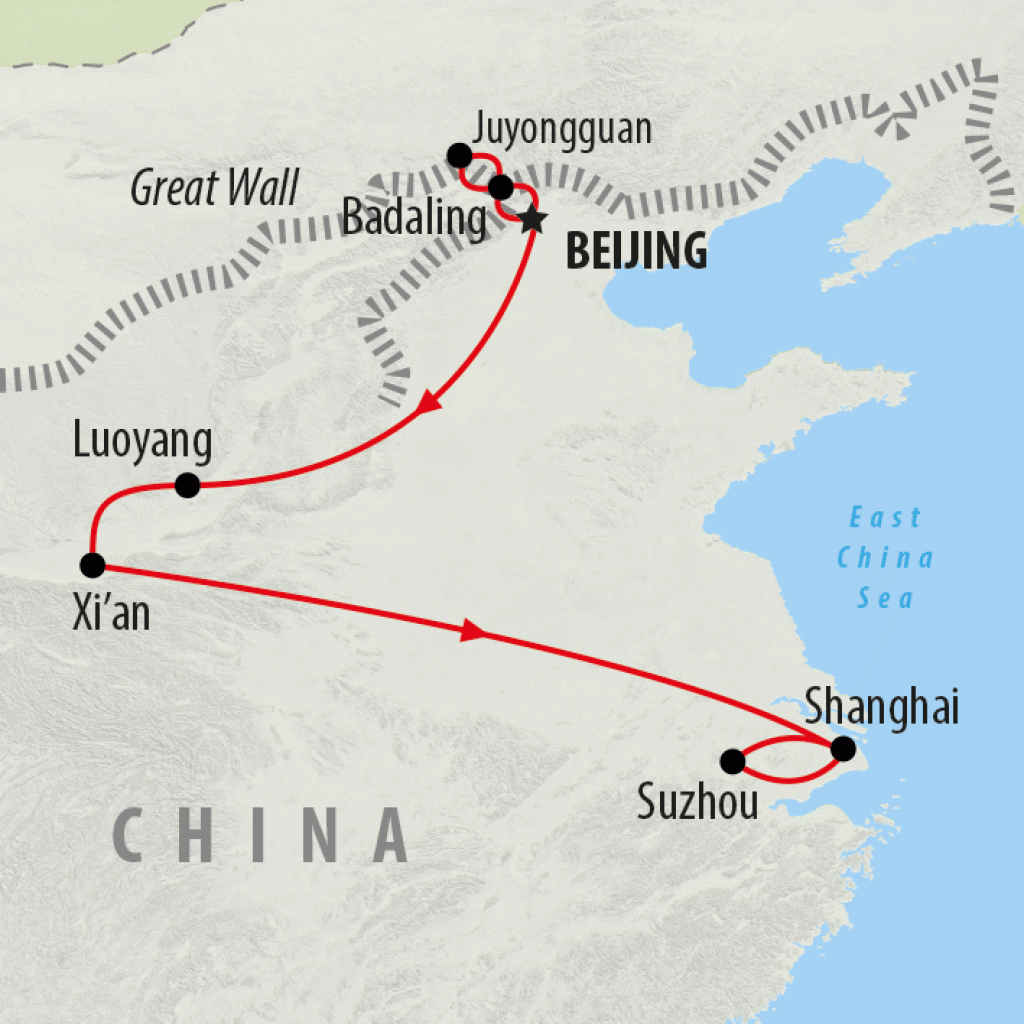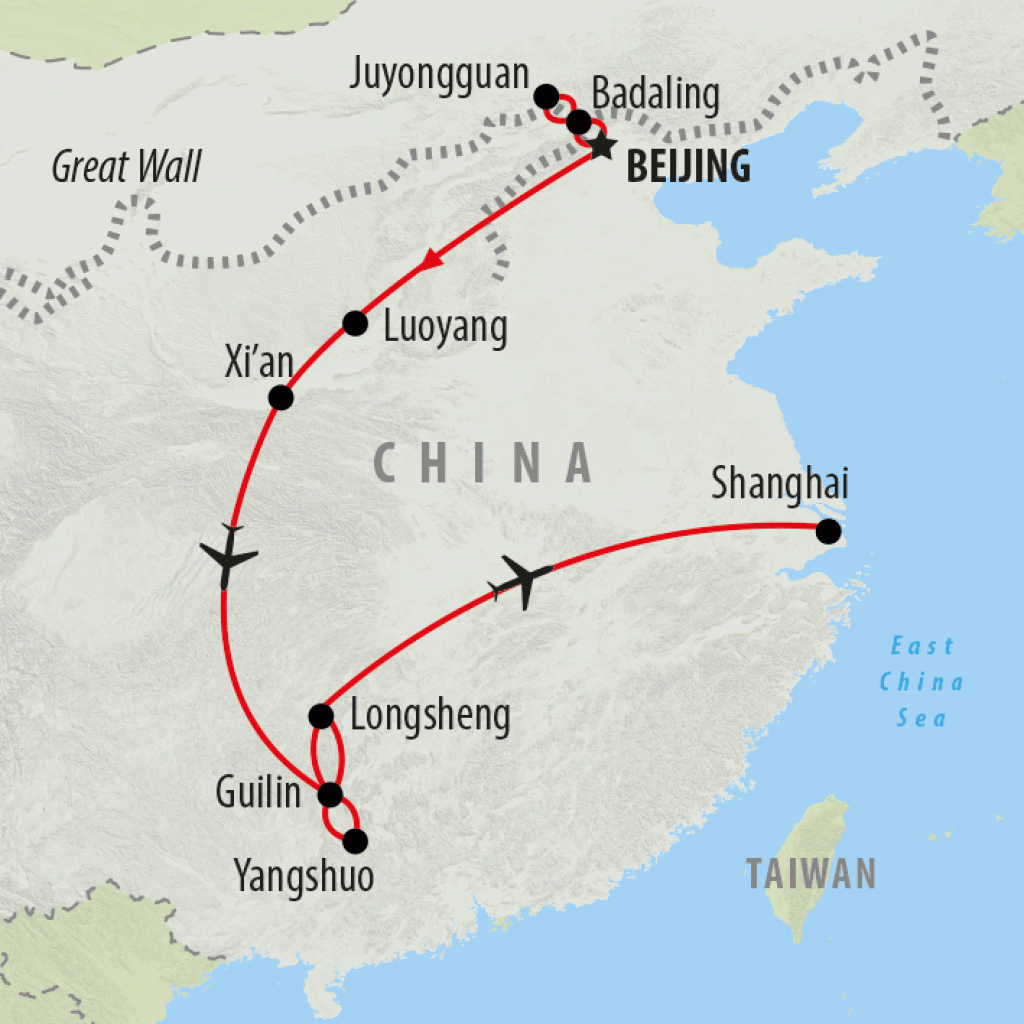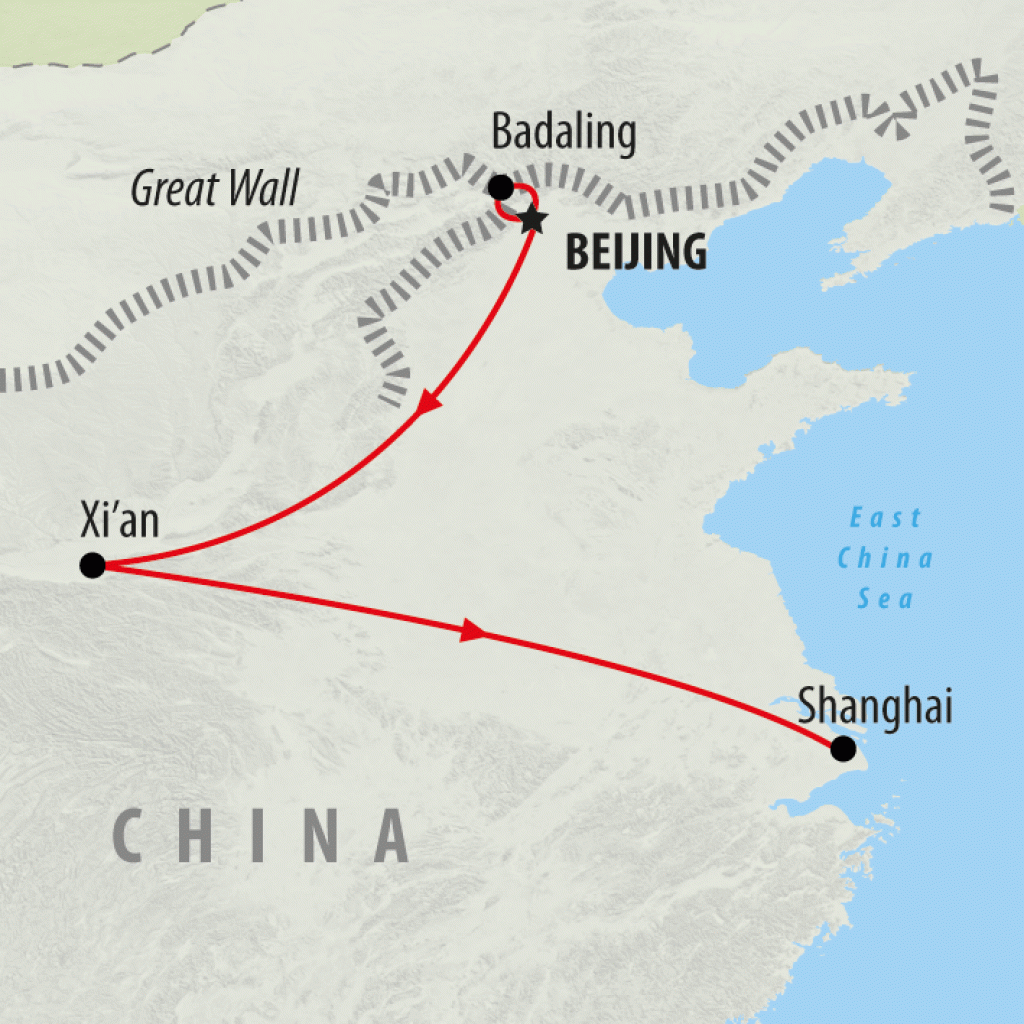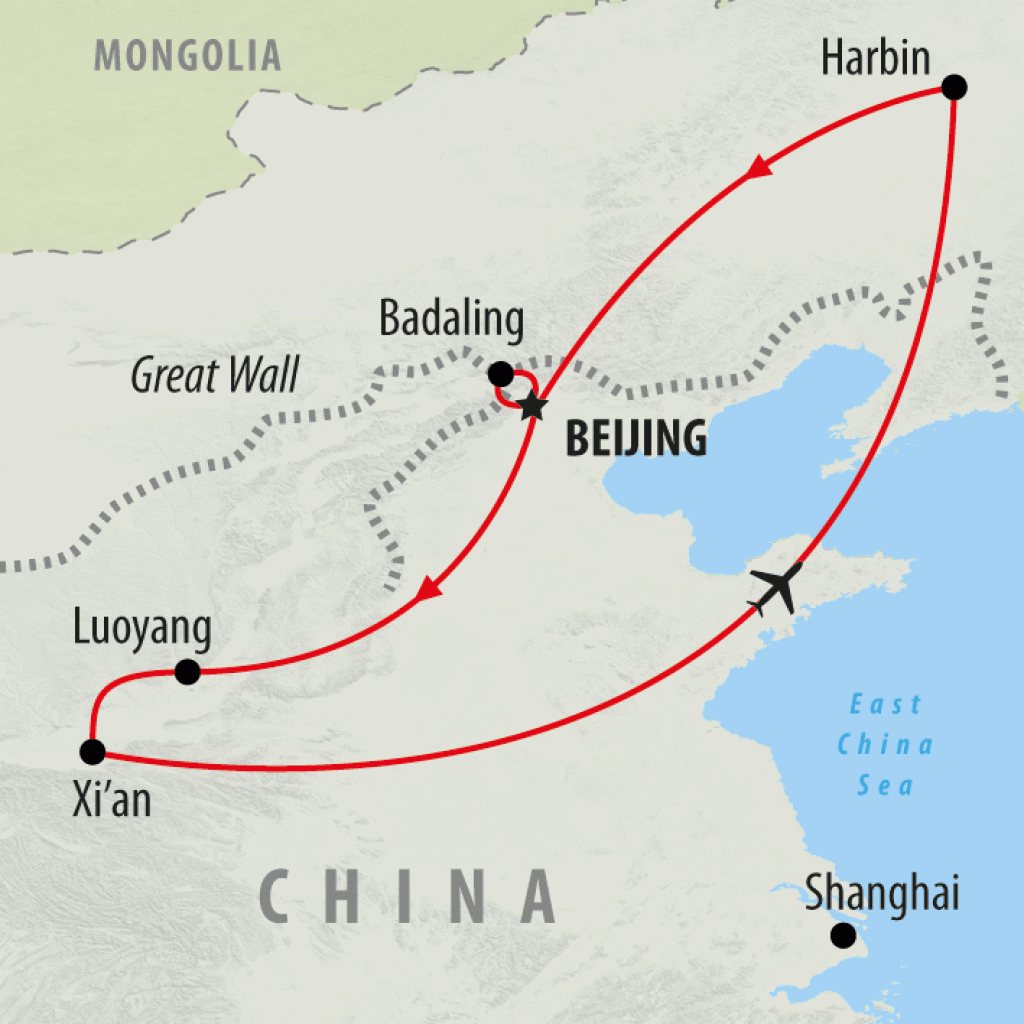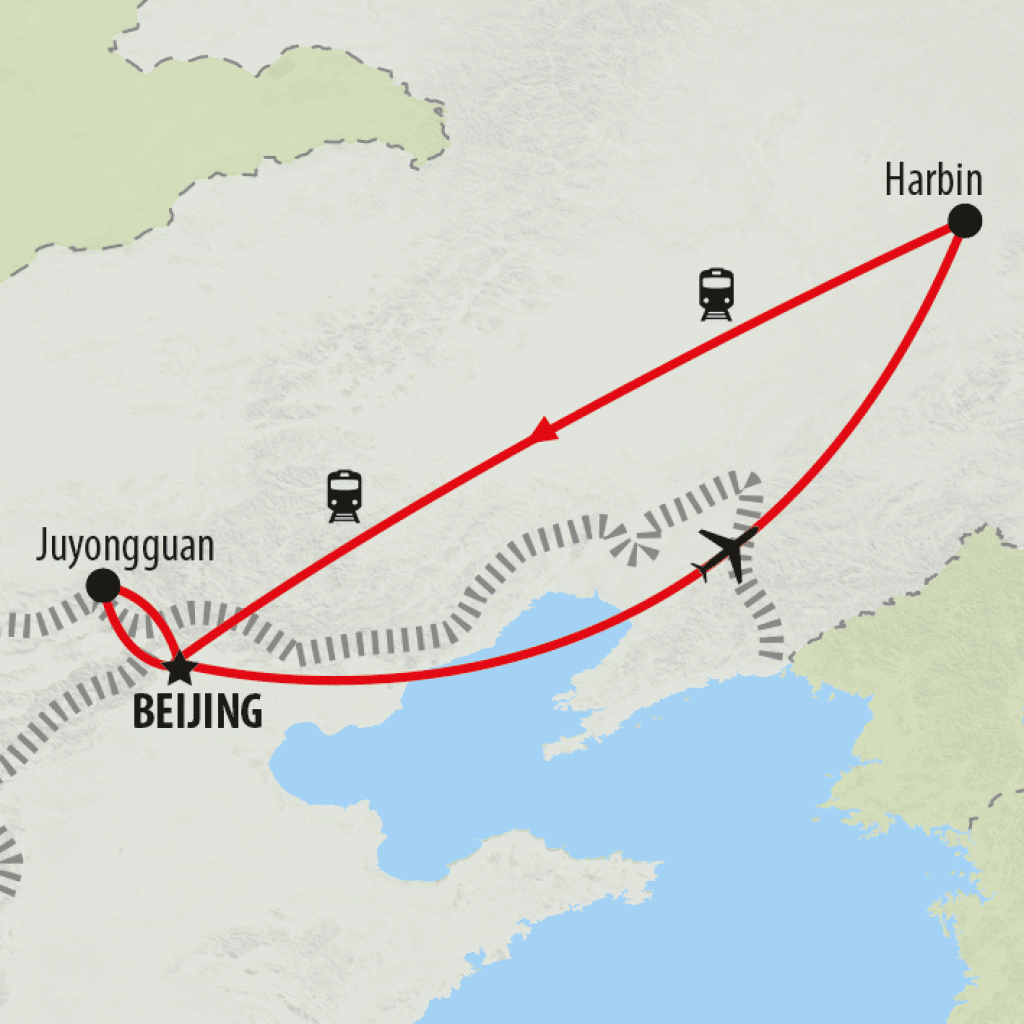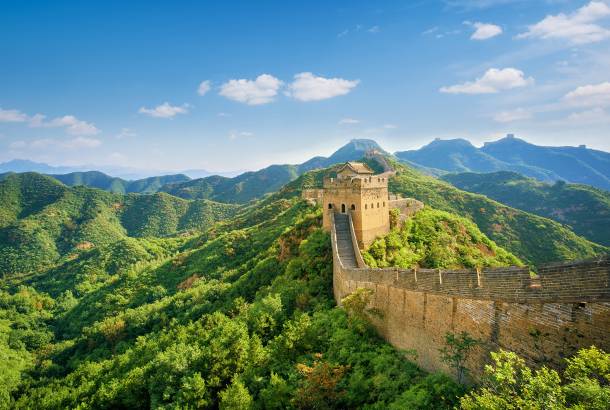
Introduction to the Great Wall of China
Stretching for more than 20,000km from the Yellow Sea in the eats to the Gobi Desert in the west, the Great Wall of China is known around the world and is a major factor in many people's decision to visit China. Dating back more than 2,300 years, the UNESCO-listed wall measures 7 metres in width and 6-14 metres in height with over 25,000 battlements snaking a path along precarious mountain ridges and thick forests. Contrary to popular belief it's not one long continuous wall but various sections interspersed with mountains that provide a natural defence. And no, you cannot see it from space, though this remains a popular myth!
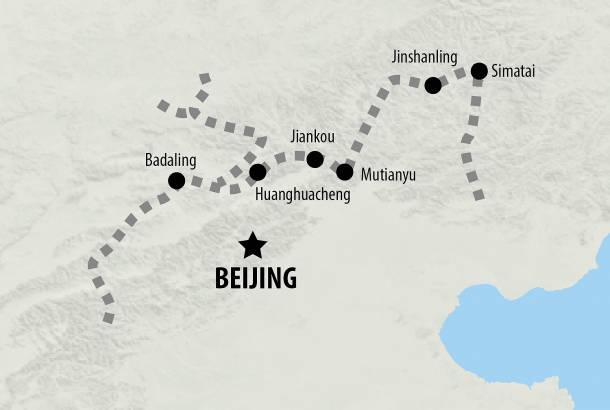
The Best Sections of the Wall to Visit
The practice of building defensive walls began in the 5th Century BC to separate rival territories and mark borders. Much of the Wall you see today is from the Ming dynasty (1368 - 1644), when the various sections of the Wall were reconstructed by the emperor.
The Wall fell into disrepair during the Qing Dynasty (1644-1912) and was actively dismantled to provide building materials - bricks from the Wall have been found in Beijing's Hutongs bearing the Imperial Seal. Today parts of the Wall have been restored to their former glory so that visitors from all over the world may marvel at the incredible feat of human engineering. Below, we've chosen some of the best sites along the wall for you to visit.
Thinking of visiting China? Download a copy of our Asia brochure for inspiration.
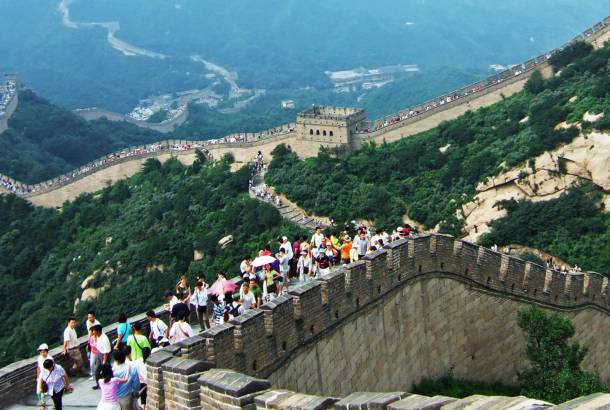
The Badaling Section
Located 70km northwest of Beijing and only a 1.5hr drive from the capital, Badaling is one of the most popular and heavily visited sections of the wall.
Featuring 16 restored watchtowers and set amongst undulating mountains, it's very photogenic and provides visitors with the classic Great Wall image. At the foot of the Badaling section of the Wall there are a number of restaurants and souvenir stalls, as well as the fascinating Great Wall Museum.
There's also a cable car to take you from the main ticket office to the top of the Wall. Its easy access from Beijing and excellent facilities make it an ideal choice if you only half a day free to visit. It's also a great choice for wheelchair users and those with mobility issues as special accessibility lanes have been made to get to the third watchtower by wheelchair.
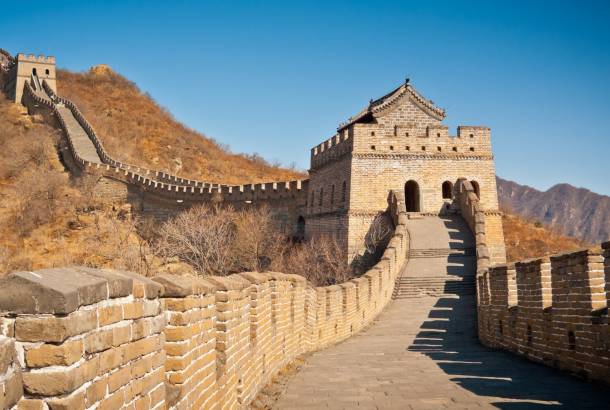
The Mutianyu Section
Located 68km east of Badaling, the 2km-long Mutianyu section is the longest fully-restored section of the Great Wall, with 22 watchtowers that were originally built as early as 1368. It is much quieter than Badaling, perfect for those who wish to capture photos of the Wall.
The rugged terrain around Mutianyu is almost totally covered in forest, with pine trees over 300 years old. This makes this section of the Wall even more picturesque, especially in the warmer months when carpeted in vibrant green.
To reach the top of the Wall you can climb a steep set of steps, or choose to ride a cable car, chairlift, or toboggan! There's also a shuttle bus available to transport you from the ticket office to the foot of the Wall. If you're interested in hiking a section of the Mutianyu Wall you can take the cable car to watchtower 15 and walk to watchtower 6 where steps lead back down to the main entrance.
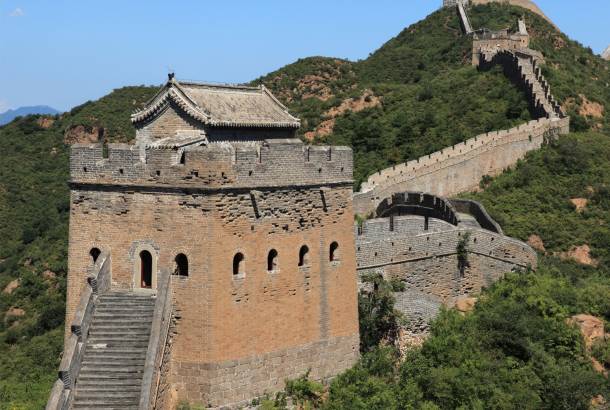
The Jinshanling Section
Located some distance further east of Mutianyu, the Jinshanling section of the Wall features a brilliantly restored portion that deteriorates into its wild and natural state. If you're looking for the quintessential picture of the Great Wall with the chance to explore more rugged areas, Jinshanling is the best option.
Stretching for 10km, Jinshanling contains many original features including obstacle walls and oval watchtowers. Due to the mountainous and uneven terrain of the region, the individual watchtowers were built in a variety of shapes and sizes with oval, rectangular and square towers all making an appearance here.
Some of the more remarkable features include the Big and Small Jinshan Watchtowers, one and two tiered structures with small retiring rooms, rafters and eaves of the roof made from polished bricks. The Jinshanling section of the Wall also features poems carved into tablets and set into the brickwork that date back to the 16th Century.
Due to its relative isolation, varied features and hiking opportunities, it's recommended to allow yourself a full day to explore Jinshanling. You'll be rewarded with great vistas and fewer people. For those less able to climb, there's a cable car from the ticket gate to the top of the wall. If you stick to the restored portion of the wall you should have little trouble visiting some of the watchtowers.
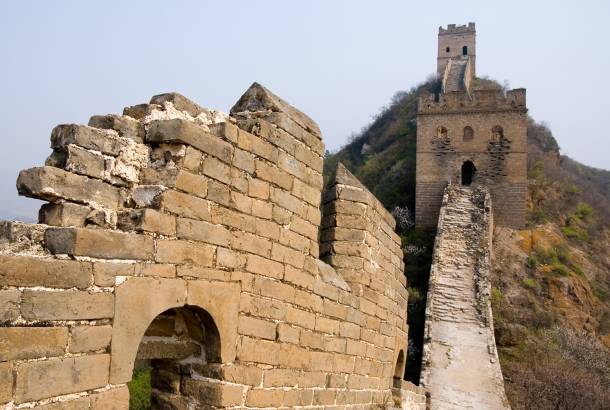
The Simatai Section
The much-less crowded section of wall at Simatai is a peaceful and semi-ruined spot further east from Jinshanling with lots of hiking options. It's one of the few sections to retain its original appearance with a 5km section dating back to the Ming Dynasty. Visitors can climb up to the Wall from the Gubei Water Town, a pretty reconstruction of an ancient Chinese town that sits at the bottom of the wall, which takes a total of 3 hours.
From the entrance you can also take the cable car up to watchtower 10 to save time and walk along the Wall to a zip-line which travels back down. For those that prefer to keep their feet firmly on the ground you can either backtrack along the Wall and return to the cable car or descend via the hiking trail. You'll need to allow a day to visit Simatai, especially if you wish to combine it with a visit to nearby Jinshanling.
The Huanghuacheng Section
Situated roughly half way between Badaling and Mutianyu, the Huanghuacheng section of the Wall is possibly the most unique. Shaped like a crescent moon, the Haoming Lake breaks up the Wall into three different segments with original sections of the Wall immersed in the water. The area is particularly beautiful in the spring months, when the countryside blooms with bright yellow flowers. Despite its unique setting, the Huanghuacheng section is one of the least visited sections and is a great choice if you're looking to avoid the crowds.
For a slightly different way to enjoy the Great Wall you can take a boat ride on the lake and instead of hiking in the mountains you can hike around the lake and cross over the dam. There's also a pretty chestnut garden beside the foot of the Wall that dates back to the Ming Dynasty. If you wish to hike along the Wall itself then it's possible to do so.
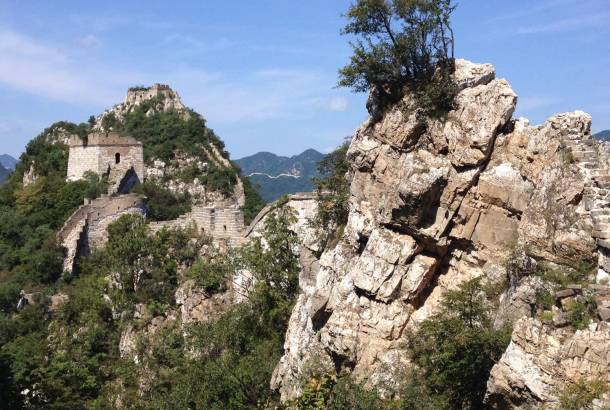
The Jiankou Section
You'll find the most untamed portion of the Great Wall at Jiankou, an unrepaired section that is not officially open to the public, however, with a local guide it's possible to reach the Wall through the local villages. Stretching 15km through valleys and built on ridges with dramatically steep cliffs, it is one of the most challenging sections of the Wall with narrow steps, sharp rises and steep descents.
The state of disrepair means that in parts the Wall stops abruptly and to continue you'll need to climb along the mountain ridge. For this reason Jiankou is only recommend for experienced hikers as there are no facilities in the area and hikers need to be properly prepared with equipment suitable for outdoor trekking. Any toilet stops will be out in the wild and all rubbish must be taken with you.
As Jiankou connects Mutianyu with Huanghuacheng there are longer hiking opportunities available and the most accessible of these options is the 6hr route to Mutianyu. Although it's far from easy, it's a highly rewarding hike with challenging ascents, crumbling structures and wild scenery. Most visitors start their visit to Jiankou with a climb up to the ruined Zhengbei Tower, which takes around 1-2 hours depending on whether you follow the route from the south side of the Wall or the north. Whether you decide to continue all the way on to Mutianyu or just explore the immediate area around Zhengbei Tower you'll need a full day.
Getting to the Great Wall from Beijing
These sections of the Wall can all be comfortably visited from Beijing . Badaling is the most accessible, located just 1.5hr by road or rail from the capital. Mutianyu and Huanghuacheng are also an hour and a half's drive from Beijing.
Simatai and Jinshanling are between a 2-3 hour drive from Beijing, depending on the traffic. As these sections of the Wall are that much further out we recommend allowing a full day to explore the sites. Due to its location among the mountains, it's impossible to reach Jiankou by public transport and you will need to go with a driver and local guide. It's a 3 hour drive from Beijing.
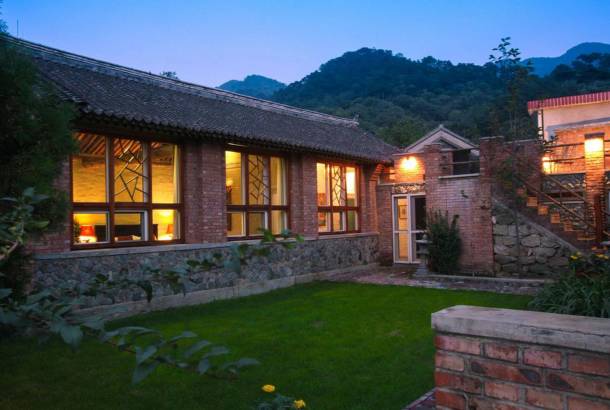
Accommodation near the Wall
To make the most of your visit to the Great Wall and to avoid a really early start for a sunrise visit, consider spending a night close to the Wall. Not only does this save on travel times, it also means you can enjoy views of the Wall and the picturesque surroundings long after the crowds have left. There are a number of non-descript accommodation options at the more popular sections but we've selected a pick of boutique properties that offer a unique experience.
Red Capital Ranch:
Styled like a Manchurian hunting lodge at the foot of the Great Wall, this boutique property features just 10 individually designed villas with salvaged architectural elements from old Chinese houses and decorations that comply with traditional Feng Shui. Open from early April to the end of October, the Red Capital Ranch has its own private access path to the Wall as well as a peaceful spa inspired by Tibetan Buddhist practices.
Brickyard Retreat at Mutianyu:
Designed using the existing footprints of a traditional peasant's house, the Brickyard Retreat aims to preserve an important part of China's rural outposts whilst providing discerning guests with modern comforts. The 25 rooms are open to nature with uncurtained clerestory windows and skylights with a rainforest shower and private terraces where you can enjoy the views of the Great Wall. The property also features a spa, fitness room and seasonal complimentary yoga lessons.
Commune by the Great Wall:
Comprised of forty individually villas that were designed by 12 Asian architects, the Commune by the Great Wall was hailed as a 'New Architectural Wonder of China' by Business Week with buildings designed to respect the history of the land and blend in with the environment. The villas feature numerous bedrooms, a living area and exquisite bathrooms with some also offering saunas, tea rooms and independent kitchens. All guests can dine on regional specialties at the Courtyard Restaurant, relax at the Poolside Cafe or enjoy a cocktail at the Pink Bar.
Home of the Great Wall:
Spread out across a wooded hill right beside the Great Wall, this mountain retreat is rustic in appearance yet modern with beautiful private villas equipped with air-conditioning and cable TV. Each villa can accommodate between 8-16 guests with Chinese style architecture and contemporary flourishes, many with a large sun deck, separate dining and living rooms, and spectacular views throughout. Perfect for groups and large families, the villas also boast large-screen satellite televisions and high-speed internet.
Wuzhenhui Boutique Hotel Gubei:
Situated besides the Simatai section of the Wall in the styled water town of Gubei, the Wuzhenhui Boutique Hotel infuses traditional Chinese design with all the modern conveniences you would expect of a luxury hotel. The four-poster beds feature intricate wood carvings and a raised seating area where you can enjoy a cup of Chinese tea. In the bathrooms a separate shower and bath tub are provided. Guests can dine on hearty local dishes at the on-site restaurant.
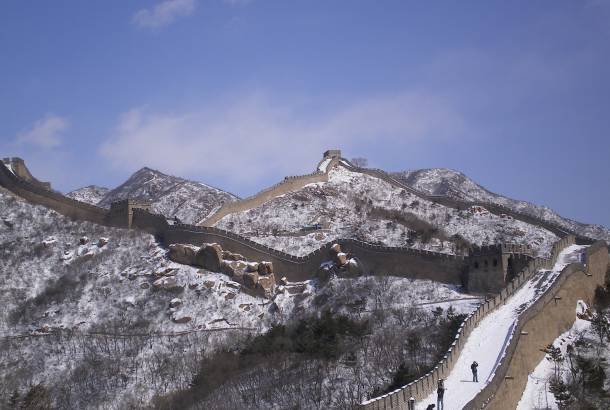
Best Time to Visit the Great Wall
The scenery around the Great Wall changes colour with the changing seasons making it a year-round destination though there are certain parts of the year that will provide a more rewarding experience. The best time to visit is the spring months between April - May when the hills bloom with flowers, the air fresh and temperatures pleasant and the crowds not yet at their peak. Avoid the Chinese Labour Day Holiday (1st - 3rd May) if you can as the Wall will be busy with domestic travellers.
Another great time to visit is during the autumn months of September through to November when the hills gleam golden hues with the changing colour of the foliage. The weather is pleasantly cool and skies clear, making it great for photography. It's still reasonably crowded at this time of year, especially during the National Holiday week that takes place early October and the whole country hits the main tourist spots.
The summer months of June - August are the busiest months when the Wall can become very crowded with both international and domestic travellers. It's hot and rainy with occasional storms, and the bright sun and haze caused by the smog that envelopes Beijing at this time of year makes serious photography more difficult. If visiting during this time, avoid early afternoon when crowds are at their peak.
Visiting in the winter months of December - February means you'll have the quieter sections of the Wall largely to yourself though you'll have the disadvantage of freezing temperatures and biting winds. That said, the Wall is incredibly beautiful when dusted with delicate frost and smatterings of snow and on clear days the skies will be a beautiful blue and highly photogenic. If you visit in the early afternoon the temperatures will be at their warmest and at this time of year crowds will be less of a concern. Avoid Chinese New Year, if you can, as crowds will be busier regardless of the weather.
Whichever month you decide to visit the Great Wall, try to go during the week when there are fewer people and less traffic on the roads. The various sections of the Wall tend to open around 7am and close at 7pm in the warmer months and open at 8am and close at 5pm in the colder months. To make the most of your time at the Great Wall, aim to arrive as early as possible to avoid the crowds. Getting there for opening time may also afford the added bonus of a stunning sunrise shot. Conversely, you may prefer to leave it as late in the day as possible when the crowds have thinned out somewhat and the sun is beginning to set. Coinciding your visit to the Great Wall with a full moon will mean the light stays stronger for longer and boosts your photographic opportunities.
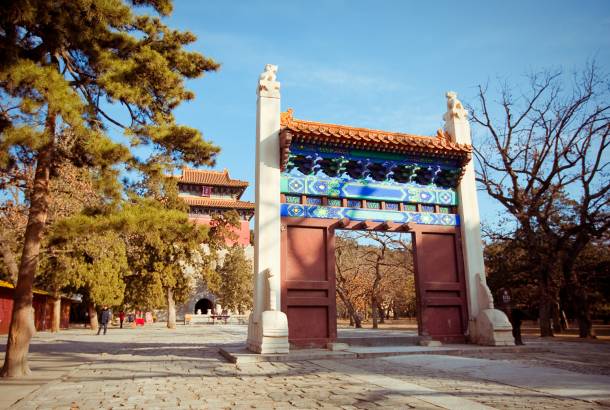
Interesting Places near the Great Wall
Ming Tombs
Set in a valley between Beijing and the Badaling section of the Wall, the Ming Tombs make a great little sightseeing addition for day trips to the Great Wall and can be easily visited on the way back to the capital. The Ming Tombs are an imperial graveyard where 13 Ming-Dynasty emperors are entombed in giant underground vaults. The spot was chosen for its natural beauty of gentle hills and attractive woods at the base of Tianshou Mountain.
Each mausoleum is an independent unit that vary in size and complexity with grand halls and platforms marking the site above ground. Of the 13 tombs, only three are currently opened to the public - Changling, Dingling and Zhaoling. To reach the Changling tomb walk the 7km-long Sacred Way, which begins at a three-tiered triumphal arch and is lined with colossal stones statues of men and animals, each with a different meaning.
Restored in the 1950s, the Changling tomb is the best preserved featuring vast courtyards, halls and terraces of white marble that are comparable to the Forbidden City. The underground palace of the Dingling tomb is crammed with treasure from the sculptured jade entrance to the gilded floor whilst the Zhaoling tomb is notable for the circular 'dumb yard' designed to keep the entrance to the tomb secret.
Juyongguan Pass
A short distance from the Badaling section of the Wall is the Juyongguan Pass, once a vital military stronghold that served as a barrier to the capital of the Yuan and Ming dynasties. In the centre of the mountain pass stands the white marble Cloud Platform where three stone towers once stood only to be destroyed by fire and replaced with a temple that suffered the same fate. One of the more impressive architectural features is the Northern Gate, a stone arched doorway mounted by a three-tiered structure stands on the platform. The area is incredibly scenic with a carpet of green covering the mountainside and a bridge joining sections of the Great Wall across the water.
Gubei Water Town
Surrounding a beautiful reservoir at the foot of the Simatai Great Wall, the Gubei Water Town is a replica of a traditional Chinese old town featuring the northern style of architecture of Hutongs and narrow stone streets running alongside river channels that perfectly blends with the mountains and water. It's a tranquil spot to leisurely wander and visit craft stores designed to showcase China's unique traditions and customs from distilling Chinese wine to cloth printing and dyeing with performances of song and dance performed daily.
There's also the option to enjoy a boat ride on the river channels and soak up the views of the Great Wall. The Gubei Water Town makes an interesting little stop on the way to the Simatai Great Wall though please note that there is an entrance fee of around $25 per person to enter the town. With a good selection of luxury and boutique hotels, it's also a good place to base yourself for the night if you wish to rise early and get to Simatai before all the day-trippers. Illuminated by lights once the sun has set, the town is particularly pretty at night and is a nice addition to your tour of China if you cannot get to one of the country's ancient water towns.
Great Wall Tours
The Great Wall really is a must-see when in China so we include a visit to the popular Badaling section of the Wall on all of our China group tours, as well as a night spent at the Juyongguan Pass so that you can enjoy a morning visit the following day, free from the crowds. Below is a selection of our most popular Great Wall tours.
If there's a particular section of the Wall you would like to visit then consider a tailor-made holiday - our specialist travel consultants can help plan your perfect trip to the Great Wall and other parts of China.
